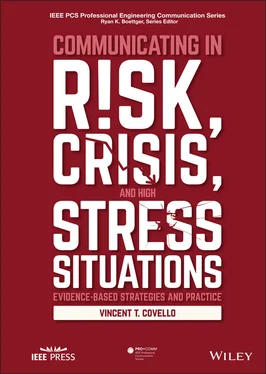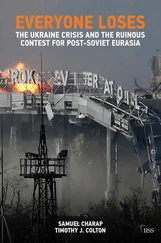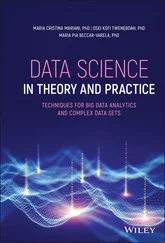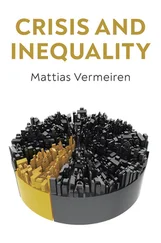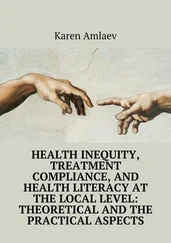363 367
364 368
365 369
366 370
367 371
368 372
369 373
370 374
371 375
372 376
373 377
374 378
375 379
376 380
377 381
378 382
379 383
380 385
381 386
382 387
383 388
384 389
385 390
386 391
387 392
388 393
389 394
390 395
391 396
392 397
393 398
394 399
395 400
396 401
397 402
398 403
399 404
400 405
401 406
402 407
403 408
404 409
405 410
406 411
407 412
408 413
409 414
410 415
411 416
412 417
413 418
414 419
415 420
416 421
IEEE Press445 Hoes Lane Piscataway, NJ 08854
IEEE Press Editorial BoardEkram Hossain, Editor in Chief
| Jón Atli Benediktsson |
Xiaoou Li |
Jeffrey Reed |
| Anjan Bose |
Lian Yong |
Diomidis Spinellis |
| David Alan Grier |
Andreas Molisch |
Sarah Spurgeon |
| Elya B. Joffe |
Saeid Nahavandi |
Ahmet Murat Tekalp |
Communicating in Risk, Crisis, and High Stress Situations
Evidence‐Based Strategies and Practice
Vincent T. Covello
Center for Risk Communication
New York City and Washington, DC
IEEE PCS Professional Engineering Communication Series
IEEE PCS Professional Engineering Communication Series
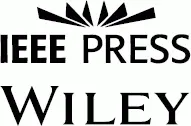
Copyright © 2022 by The Institute of Electrical and Electronics Engineers, Inc. All rights reserved.
Published by John Wiley & Sons, Inc., Hoboken, New Jersey.
Published simultaneously in Canada.
No part of this publication may be reproduced, stored in a retrieval system, or transmitted in any form or by any means, electronic, mechanical, photocopying, recording, scanning, or otherwise, except as permitted under Section 107 or 108 of the 1976 United States Copyright Act, without either the prior written permission of the Publisher, or authorization through payment of the appropriate per‐copy fee to the Copyright Clearance Center, Inc., 222 Rosewood Drive, Danvers, MA 01923, (978) 750‐8400, fax (978) 750‐4470, or on the web at www.copyright.com. Requests to the Publisher for permission should be addressed to the Permissions Department, John Wiley & Sons, Inc., 111 River Street, Hoboken, NJ 07030, (201) 748‐6011, fax (201) 748‐6008, or online at http://www.wiley.com/go/permission.
Limit of Liability/Disclaimer of Warranty: While the publisher and author have used their best efforts in preparing this book, they make no representations or warranties with respect to the accuracy or completeness of the contents of this book and specifically disclaim any implied warranties of merchantability or fitness for a particular purpose. No warranty may be created or extended by sales representatives or written sales materials. The advice and strategies contained herein may not be suitable for your situation. You should consult with a professional where appropriate. Neither the publisher nor author shall be liable for any loss of profit or any other commercial damages, including but not limited to special, incidental, consequential, or other damages.
For general information on our other products and services or for technical support, please contact our Customer Care Department within the United States at (800) 762‐2974, outside the United States at (317) 572‐3993 or fax (317) 572‐4002.
Wiley also publishes its books in a variety of electronic formats. Some content that appears in print may not be available in electronic formats. For more information about Wiley products, visit our web site at www.wiley.com.
Library of Congress Cataloging‐in‐Publication Data is applied for
Paperback: 9781119027430
Cover Design: Wiley
Cover Image: © Austin Goodwin
A Note from the Series Editor
By Series Editor, Ryan K. Boettger Ph.D.
As our world continues to fundamentally change, I have started (and restarted) writing this editor’s note several times.
Whatever I write about the COVID‐19 global pandemic today (June 2021) will have changed by the time you read this. Every day, we learn about new science, new insights, and new challenges that we will no doubt continue to grapple with for decades to come. However, we appear to be on an optimistic and upward trajectory with three vaccines in circulation and the decline of new COVID‐19 cases in many parts of the world.
When Dr. Vincent Covello and I first met about this project in 2019, we discussed the value of creating a book that relayed evidence‐based strategies for risk, crisis, and high stress situations. Rather than lecturing to readers, Dr. Covello wanted to share his experiences – successes and failures – with other leaders besides offering materials and resources that he has developed or adapted over the years. Neither Dr. Covello nor I predicted the 2020 pandemic and its very real implications for the foundations and principles outlined in this book.
The global impacts of the pandemic motivated a complete reconceptualization of this project. In fact, we delayed the production of this manuscript because Dr. Covello’s expertise in risk, high concern, and crisis communication was needed. During the pandemic, Dr. Covello worked nearly full time with the State Health Directors and Governors on their COVID‐19 communications. It was important, challenging work that required nearly daily adjustments to account for changes in knowledge and policies. When he returned to working on this manuscript, Dr. Covello detailed many of those experiences for readers.
Each chapter contains at least one case diary, or a personal account of Dr. Covello’s extensive tenure and experiences in the areas of risk, high concern, and crisis communication. These are stories and experiences that Dr. Covello hasn’t detailed in previous works. Many of these cases are COVID‐19‐related and account for the various communication failures and successes our world has experienced over the last year and a half. Dr. Covello has written a timely text that you will draw insights from over decades to come. As our understanding of COVID‐19 continues to grow, Dr. Covello’s recommended principles and response techniques become even more relevant to our responses to the next crisis.
Vincent Covello is the leader in the areas of risk and crisis communication. He is the founder and Director of the Center for Risk Communication besides being a nationally and internationally recognized trainer, researcher, and consultant. As you read this book, you’ll discover more about Dr. Covello’s extensive professional experiences. For example, he was the founding director of the NSF program on decision‐making communication about technology risks. His work here also led him to become one of the first presidents of the Society for Risk Analysis, and he helped launch the journal Risk Analysis , one of the leading scientific publishers of original risk communication research. In short, there is no one better to learn these strategies from than Dr. Covello. And it was a privilege to work with him on this important project.
On a personal note, this is the last title under my editorship for the Professional Engineering Communication series. I strived to deliver quality content for your professional development. The series, backed by Wiley‐IEEE Press, remains an impressive collection of communication and professional insights from scholars. In particular, I hope the last three titles heightened your thinking about the future of STEM education.
Читать дальше
